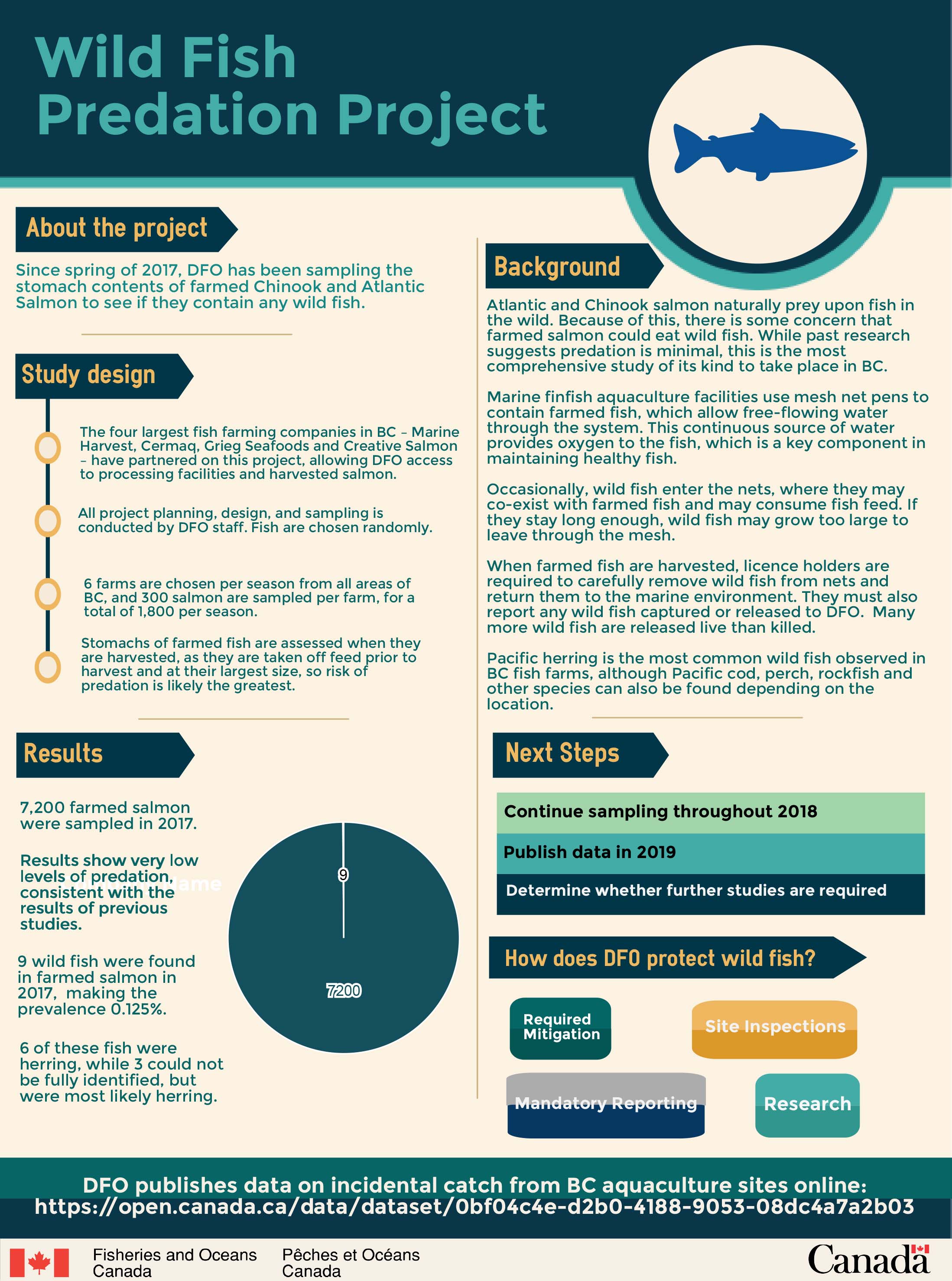Wild fish predation project

Description: Wild fish predation project
About the project
Since spring of 2017, DFO has been sampling the stomach contents of farmed Chinook and Atlantic Salmon to see if they contain any wild fish.
Background
Atlantic and Chinook salmon naturally prey upon fish in the wild. Because of this, there is some concern that farmed salmon could eat wild fish. While past research suggests predation is minimal, this is the most comprehensive study of its kind to take place in BC.
Marine finfish aquaculture facilities use mesh net pens to contain farmed fish, which allow free-flowing water through the system. This continuous source of water provides oxygen to the fish, which is a key component in maintaining healthy fish.
Occasionally, wild fish enter the nets, where they may co-exist with farmed fish and may consume fish feed. If they stay long enough, wild fish may grow too large to leave through the mesh.
When farmed fish are harvested, licence holders are required to carefully remove wild fish from nets and return them to the marine environment. They must also report any wild fish captured or released to DFO. Many more wild fish are released live than killed.
Pacific herring is the most common wild fish observed in BC fish farms, although Pacific cod, perch, rockfish and other species can also be found depending on the location.
Study design
- The four largest fish farming companies in BC – Marine Harvest, Cermaq, Grieg Seafoods and Creative Salmon – have partnered on this project, allowing DFO access to processing facilities and harvested salmon.
- All project planning, design, and sampling is conducted by DFO staff. Fish are chosen randomly.
- 6 farms are chosen per season from all areas of BC, and 300 salmon are sampled per farm, for a total of 1,800 per season.
- Stomachs of farmed fish are assessed when they are harvested, as they are taken off feed prior to harvest and at their largest size, so risk of predation is likely the greatest.
Results
- 7,200 farmed salmon were sampled in 2017.
- Results show very low levels of predation, consistent with the results of previous studies.
- 7 wild fish were found in farmed salmon in 2017, making the prevalence 0.1%.
- 4 of these fish were herring, while 3 could not be fully identified, but were most likely herring.
Next steps
- Continue sampling throughout 2018
- Publish data in 2019
- Determine whether further studies are required
How does DFO protect wild fish?
- Required mitigation
- Site inspections
- Mandatory reporting
- Research
DFO publishes data on incidental catch from BC aquaculture sites online
- Date modified: